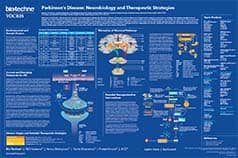Cyclooxygenases
Cyclooxygenase (also known as COX, Prostaglandin-endoperoxide synthase, Prostaglandin G/H synthase) is expressed in cells in three isoforms. COX-1 (constitutive) and COX-2 (inducible) isoforms catalyze the rate-limiting step of prostaglandin production.
Cyclooxygenase Inhibitors |
|
|---|---|
| Cat. No. | Product Name / Activity |
| 1706 | Acetaminophen |
| Cyclooxygenase inhibitor; may be selective for COX-3 | |
| 4092 | Aspirin |
| Cyclooxygenase inhibitor; NSAID | |
| 3786 | Celecoxib |
| Selective cyclooxygenase-2 (COX-2) inhibitor | |
| 4454 | Diclofenac sodium salt |
| Cyclooxygenase inhibitor; NSAID | |
| 4522 | Flufenamic acid |
| Cyclooxygenase inhibitor; NSAID. Also activates TRPC6 | |
| 1708 | Indomethacin |
| Cyclooxygenase inhibitor (COX-1 > COX-2) | |
| 0942 | NS 398 |
| Cyclooxygenase-2 (COX-2) inhibitor | |
| 1418 | Resveratrol |
| Cyclooxygenase inhibitor | |
| 1550 | SC 560 |
| Cyclooxygenase-1 (COX-1) inhibitor | |
| 3919 | SC 236 |
| Selective cyclooxygenase-2 (COX-2) inhibitor | |
| 4206 | Valdecoxib |
| Selective and potent COX-2 inhibitor | |
Cyclooxygenase (also known as COX, Prostaglandin-endoperoxide synthase, Prostaglandin G/H synthase) is expressed in cells in three isoforms: COX-1, COX-2 and COX-3. COX-1 (constitutive) and COX-2 (inducible) isoforms catalyze the rate-limiting step of prostaglandin production and are the targets of non-steroidal anti-inflammatory drugs. COX-3 does not appear to be involved in inflammatory processes, but seems to be involved in pain and fever. COX-3 is thought to be derived through the retention of the highly structured G + C-rich intron 1 of the COX-1 gene.
External sources of pharmacological information for Cyclooxygenases :
Literature for Cyclooxygenases
Tocris offers the following scientific literature for Cyclooxygenases to showcase our products. We invite you to request* your copy today!
*Please note that Tocris will only send literature to established scientific business / institute addresses.
Parkinson's Disease Poster
Parkinson's disease (PD) causes chronic disability and is the second most common neurodegenerative condition. This poster outlines the neurobiology of the disease, as well as highlighting current therapeutic treatments for symptomatic PD, and emerging therapeutic strategies to delay PD onset and progression.

